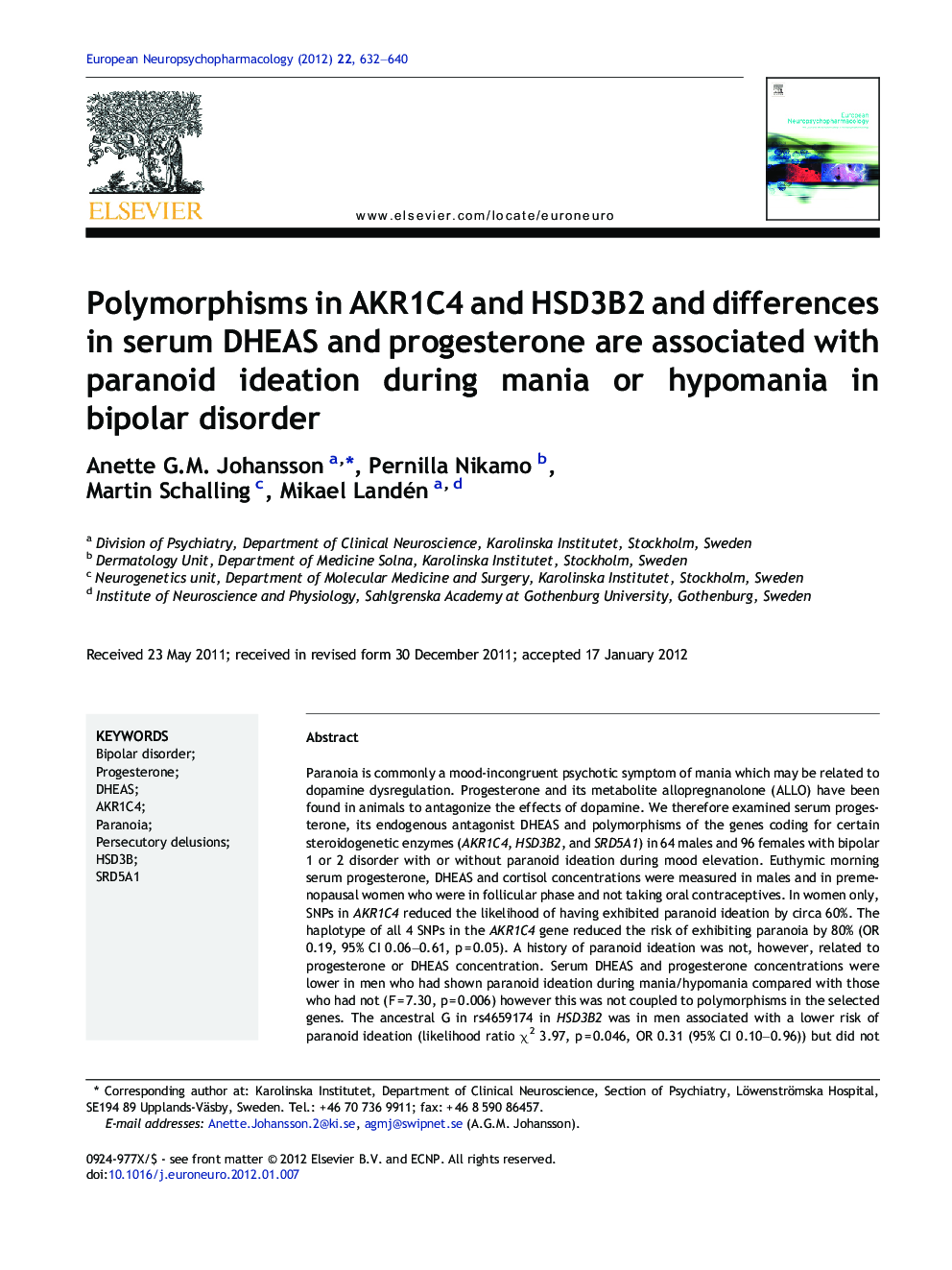| Article ID | Journal | Published Year | Pages | File Type |
|---|---|---|---|---|
| 10300056 | European Neuropsychopharmacology | 2012 | 9 Pages |
Abstract
Paranoia is commonly a mood-incongruent psychotic symptom of mania which may be related to dopamine dysregulation. Progesterone and its metabolite allopregnanolone (ALLO) have been found in animals to antagonize the effects of dopamine. We therefore examined serum progesterone, its endogenous antagonist DHEAS and polymorphisms of the genes coding for certain steroidogenetic enzymes (AKR1C4, HSD3B2, and SRD5A1) in 64 males and 96 females with bipolar 1 or 2 disorder with or without paranoid ideation during mood elevation. Euthymic morning serum progesterone, DHEAS and cortisol concentrations were measured in males and in premenopausal women who were in follicular phase and not taking oral contraceptives. In women only, SNPs in AKR1C4 reduced the likelihood of having exhibited paranoid ideation by circa 60%. The haplotype of all 4 SNPs in the AKR1C4 gene reduced the risk of exhibiting paranoia by 80% (OR 0.19, 95% CI 0.06-0.61, p = 0.05). A history of paranoid ideation was not, however, related to progesterone or DHEAS concentration. Serum DHEAS and progesterone concentrations were lower in men who had shown paranoid ideation during mania/hypomania compared with those who had not (F = 7.30, p = 0.006) however this was not coupled to polymorphisms in the selected genes. The ancestral G in rs4659174 in HSD3B2 was in men associated with a lower risk of paranoid ideation (likelihood ratio Ï2 3.97, p = 0.046, OR 0.31 (95% CI 0.10-0.96)) but did not correlate with hormone concentrations. Hence, gene variants in the steroidogenetic pathway and steroids concentration differences may be involved in the susceptibility to paranoia during mood elevation.
Related Topics
Life Sciences
Neuroscience
Biological Psychiatry
Authors
Anette G.M. Johansson, Pernilla Nikamo, Martin Schalling, Mikael Landén,
